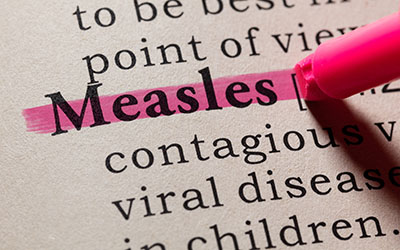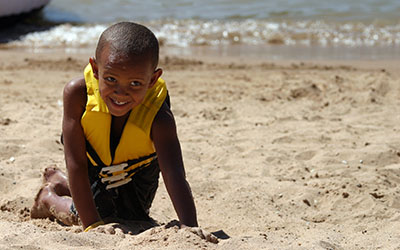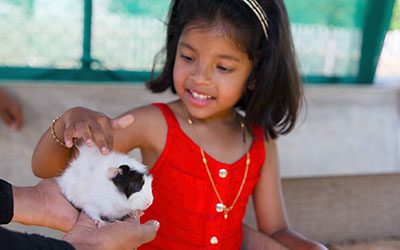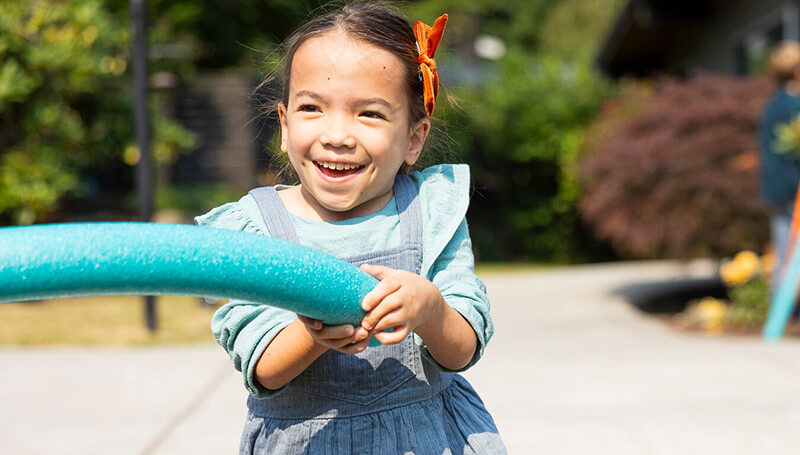Good Growing
Summer 2025
Body Image and Mental Wellness
 A healthy body image — how we think and feel about our bodies — is a key part of overall mental wellness. It’s common for children of any gender to develop body-image issues as they approach puberty, and these challenges can sometimes begin even earlier.
A healthy body image — how we think and feel about our bodies — is a key part of overall mental wellness. It’s common for children of any gender to develop body-image issues as they approach puberty, and these challenges can sometimes begin even earlier.
As parents and caregivers, we can help our kids appreciate and accept their bodies. Our words and actions are powerful influences. What we say and do can encourage kids to treat their bodies with respect, make healthy choices and avoid comparing themselves to others.
There’s a helpful idea called ‘body neutrality’ that we can explore and discuss with our kids. A body-neutral mindset helps us be at peace with our body by appreciating what it does for us. There’s no reason to obsess over our body or resent it — or be a perfectionist about how it looks. The outer ‘container’ that is our body is just a small part of what makes us who we are.
We can also talk about food in a neutral way. Rather than labeling food as good or bad, we can treat it as fuel. For a body to feel good and perform its best, it needs quality food. At home, serve a variety of nourishing foods and avoid being a ‘food cop.’ (Since tweens and teens spend many hours away from home, they’re making lots of their own food choices anyway.) Don’t bug kids about eating more or eating less. Let them tune in to their bodies, feel their own hunger cues, and decide whether to eat or not. When possible, eat together so you can connect as a family. Keep meals fun and relaxed — and screen-free.
Avoid talking about weight, dieting and clothing sizes. If your child says negative things about their body, stop them gently. Help them focus on everything their body can do: run up a hill, carry a heavy load, take them where they need to go. Encourage movement and exercise because it feels good — then support your child as they discover their own favorite ways to move their body.
Limit screen time and especially social media, which tends to focus on physical appearance and can undermine self-confidence. Be sure your child is getting quality rest. Simple meditations and breathwork can also help young people feel more relaxed and centered in their bodies. And of course, be a role model: accept and care for your own body in the way it deserves!
If you worry about your child’s mental well-being as it relates to body image, eating behaviors or weight-related health issues, talk with their doctor.
Visit our Mental Health Resource Hub for more ways to support your child or teen’s mental wellness. You may also be interested in The Chat puberty classes.
Sunscreen Quick Tips
 For outdoor summer fun, sunscreen is essential. Childhood sun damage is one of the biggest causes of skin cancer in adults. And people who get severe sunburns in childhood are more likely to later develop malignant melanoma, the most dangerous type of skin cancer.
For outdoor summer fun, sunscreen is essential. Childhood sun damage is one of the biggest causes of skin cancer in adults. And people who get severe sunburns in childhood are more likely to later develop malignant melanoma, the most dangerous type of skin cancer.
Choose sunscreen with both UVA and UVB screens with SPF of at least 30. Apply it heavily, using about a golf ball-size amount. Put it on 20 to 30 minutes before going outside, then reapply at least every 2 hours or as the label instructs. Be sure to use water-resistant sunscreen for all water activities.
Seek shady areas or create your own shade with a canopy or umbrella. Try to limit time in the sun between 11 a.m. and 3 p.m., when solar rays are most dangerous. Wear summery long sleeves and pants when possible — and for the best protection, choose tightly woven fabrics that you can’t see through.
Check out more summer safety tips and enjoy your outdoor adventures safely!
How Serious Is Measles?
 Measles has the potential to cause severe illness, and it’s a highly contagious disease. In fact, measles is so contagious that if one person has it, up to 9 out of 10 people nearby will become infected if they are not protected against it through vaccination or previous measles infection. Measles mainly spreads through the air when an infected person coughs or sneezes. And the virus can survive in the air for up to 2 hours after an infected person leaves an area.
Measles has the potential to cause severe illness, and it’s a highly contagious disease. In fact, measles is so contagious that if one person has it, up to 9 out of 10 people nearby will become infected if they are not protected against it through vaccination or previous measles infection. Measles mainly spreads through the air when an infected person coughs or sneezes. And the virus can survive in the air for up to 2 hours after an infected person leaves an area.
Symptoms begin 7 to 21 days after exposure. Measles can cause a rash, fever, cough, runny nose and red, watery eyes. A person with measles is contagious from the period 4 days before a rash appears through 4 days after it appears. A measles rash usually begins as flat red spots on the face at the hairline, then spreads downward on the body.
Measles can also lead to ear infections, diarrhea and pneumonia. And rarely, it can lead to brain inflammation and/or death. Those at highest risk for serious complications from measles include babies and children under age 5, adults over age 20, pregnant people and those with weakened immune systems.
The good news is that the measles vaccine (given in two doses) is highly effective. The measles, mumps and rubella (MMR) vaccine provides about 97% protection against getting infected by measles — and that protection lasts an entire lifetime.
Learn more about protecting your family from measles. If you have questions about measles or the measles vaccine, talk with your child’s doctor.
Supervise Kids Closely Near Water
 When kids are in or near water, be ready to maximize the fun and minimize the danger! Close and careful adult supervision is crucial — yet this isn’t as simple as it sounds. At the pool or beach, it’s easy to be distracted by your phone or book, or to doze off in the sun. Drowning can happen surprisingly fast and quietly, in little water. And it can happen in crowded settings with lots of adults around, because when a group gathers, everyone’s attention tends to be divided.
When kids are in or near water, be ready to maximize the fun and minimize the danger! Close and careful adult supervision is crucial — yet this isn’t as simple as it sounds. At the pool or beach, it’s easy to be distracted by your phone or book, or to doze off in the sun. Drowning can happen surprisingly fast and quietly, in little water. And it can happen in crowded settings with lots of adults around, because when a group gathers, everyone’s attention tends to be divided.
Remember to always:
- Explain and enforce water safety rules, including wearing life jackets.
- Swim with others in areas with lifeguards.
- Watch all children and teens in or near water — even if they know how to swim and even when waterplay or swimming is not planned.
- Stay within arm’s reach of young kids and inexperienced swimmers in the water.
- Designate a responsible, full-time ‘water watcher’ when in or around water.
- Abstain from alcohol and other drugs during water-related activities.
Get more water safety tips for families and download a coupon for 20% off of life jackets at Big 5 Sporting Goods.
Petting Zoo Safety
 Is an animal exhibit or fair part of your family’s summer plans? If so, some simple rules will help ensure it’s a safe visit.
Is an animal exhibit or fair part of your family’s summer plans? If so, some simple rules will help ensure it’s a safe visit.
Before entering any petting area, be sure hands and faces are clean and don’t smell like food. Once inside, obey the posted rules, don’t eat or drink anything, and don’t touch your face with your hands. Stay very close to your child so you can supervise and pick them up if an animal becomes bothersome.
Clean your hands carefully as soon as you exit. Keep in mind that it’s safest for kids under age 5 to avoid touching reptiles, amphibians or poultry, as these animals are more likely to make children sick.
Visit Ways to Stay Healthy Around Animals to learn about safety around pets and other animals.
Urgent Care Offers Year-Round Convenience
 Parents and caregivers may think of using urgent care mainly during late fall and winter, when viruses like colds, flu and RSV are making the rounds. But urgent care is a convenient option at any time of year. It can be an ideal solution during the summer months when kids and teens are enjoying outdoor activities and adventures — and your family is more likely to be away from home.
Parents and caregivers may think of using urgent care mainly during late fall and winter, when viruses like colds, flu and RSV are making the rounds. But urgent care is a convenient option at any time of year. It can be an ideal solution during the summer months when kids and teens are enjoying outdoor activities and adventures — and your family is more likely to be away from home.
When should you go to urgent care versus other health care options?
Visit your child’s doctor or primary care provider when you need health advice or treatment for common illnesses and minor injuries that don’t require immediate attention. Your primary care provider is also your go-to option for well-child checkups, physicals, prescription refills, vaccinations and screenings.
Call 911 or go to an emergency department if your child has a life-threatening or serious illness or injury, or if there are signs of a mental or behavioral health emergency.
Go to urgent care when your child has a non-life-threatening illness or injury, and you cannot see their primary care provider due to scheduling or distance. Urgent care is a great option for common summer ailments including allergies, minor asthma attacks, heat rashes, sprains and strains, ear pain from swimmer’s ear, scrapes and bumps.
It’s best for children and teens to get urgent care from pediatric experts. Seattle Children’s has four pediatric urgent care clinics — located in Bellevue, Everett, Federal Way and Seattle. Additionally, virtual urgent care from Seattle Children’s is available anywhere in Washington state.
Seattle Children’s also has two specialty urgent care clinics. Psychiatric Urgent Care offers in-person and video visits for children ages 4 through 17 who need mental health support and do not need the services of an emergency department. Orthopedic Injury Urgent Care offers in-person visits for children, teens and young adults up to their 21st birthday with urgent orthopedic and sports-related injuries that do not require emergency department services.
Learn more about when to go to an urgent care, when to go to an emergency department, and about Seattle Children’s urgent care clinics.


